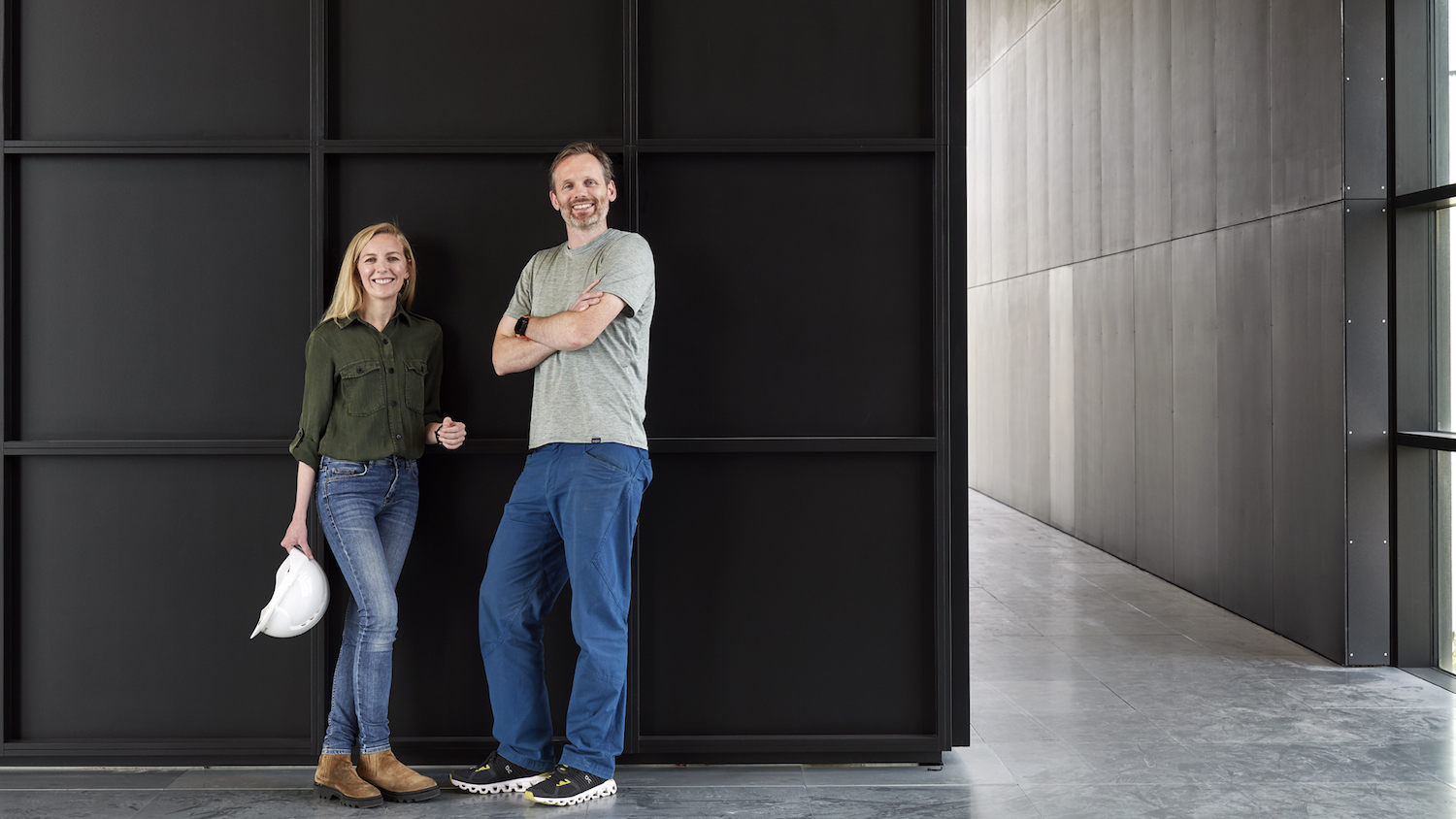
Want communications between all parties on a project that can document works via images and video that cross-references with assets and activities? Perhaps the SymTerra platform is what you need. Here, the start-up’s co-founders Sarah Crawley and John Ryan give the lowdown their platform.
Let’s have your elevator pitch: how does your technology help those in the built environment?
Construction is an inherently co-operative activity: multiple different skilled trades come together to deliver a construction programme. But the way teams currently communicate is structured for failure.
SymTerra’s platform allows easy, instant, and intuitive communication across multiple contractors to the same project. Clients, contractors and subcontractors can document works via images and video, cross reference assets and activities, and share information instantly with who they need to. It is the BIM pipeline from site reflecting how works are actually delivered.
We’re here to resolve a unified pain-point across all construction sites: poor communication. Unlike existing software where information is siloed, we allow site teams to communicate across the supply chain. And to share updates through flexible pricing and user permissions that reflect how work is delivered.
Which businesses have tested it or are currently using it?
We launched SymTerra in March 2021, originally with one client on one project. Today we have a client portfolio that includes £5bn worth of construction and infrastructure projects. Our clients include industry-leading organisations Thames Water, MTR, Kier, Balfour Beatty and Transport for London.
In September this year, we launched our Freemium subscription. It brings the app to a large chunk of the construction market that is digitally unserved. In reality most construction tech targets the tier 1 contractors (those with more than 1,200 employees), which is only 0.02% of the UK market. We want to reach the other 99.98%!
What was the genesis of your technology?
We come from construction, working for Laing O’Rourke, Mace, Tideway, Crossrail and London Overground. No matter how big or technical the construction project, we always found ourselves managing with Microsoft Excel, email and WhatsApp. And yes, even pen and paper. We would regularly have to make decisions with incorrect, out-of-date information, or sometimes no information at all. Often we were unable to communicate with our subcontractors.
We decided to do something about it.
Construction is one of the last industries to shake off analogue methods. If you asked 100 random people on a site for a status report, they would all give you a different answer. This absent or incorrect information contributes to delays and, cost impact aside, is a major cause of stress for those on site. That’s even before we get to the ‘small matter’ of the Building Safety Act. This is further driving change within the industry, making us fundamentally rethink the way sites report, keep records and communicate.
Construction is approximately 14% of global GDP. But it is seen as a niche industry to provide software to and therefore has a high bar for entry. Only the large tier 1 companies with back-office teams have the time and resources to implement and utilise complex systems with high usage costs. This excludes the vast majority of the construction market without the capability or finances to use these systems. The result is low digital adoption, particularly at the ‘site team’ end of the scale.

Who’s your senior management team and what’s their background?
We’re a ‘wife and husband’ team with 25 years of site management and engineering experience in construction: we founded SymTerra. We had first-hand experience of the ‘communications chasm’ and data-gap between onsite teams and management. So we understood the impact on site teams; contributing to delays and significant re-works costs. As well as the fundamental inability to establish the golden thread across the lifecycle of the building.
Sarah Crawley, COO: I started my career as a project manager, working in a variety of construction project management roles, and specialising in hospital construction. Working at Mace as a senior project manager, I identified an issue with communication and a gap in the construction industry. When I finished my last project, I decided it was time to build the SymTerra app from scratch. I initially worked alongside Google for Startups before bringing John in to help grow the business.
John Ryan, CEO: I’m a chartered mechanical engineer, former lead design engineer and senior project manager. I have more than 25 years’ construction experience working for Laing O’Rourke, Tideway and Network Rail. I’ve worked on a variety of projects and mega-projects, such as Crossrail East, Tideway tunnel and London Underground station renovations.
We’ve been focused on bringing in the right skills to bolster our team, across technical, operations and sales and marketing. Our operations manager and sales managers, for example, come from construction, bringing a huge wealth of knowledge of how the platform can be transformational at many levels.
Are you looking for funding?
We have just closed our first seed round at $1.7m, with investment from a global investor base, led by Samaipata with participation from Nemetschek, Pi Labs and Accel.
Prior to this, we were completely self-funded. Once we became revenue generating, we reinvested that to help us grow.
What are your plans for the next two years?
Currently, we are building our team. We’re aiming to triple headcount by year-end, with a key focus on sales and marketing roles. This will help us expand and reach new customers across the UK and in new regions.
We’re going to make site communications accessible on a huge scale. Our freemium subscription puts the app in the hands of previously unserved site teams. This will allow them to easily align with OpenBIM and the building sustainability assessment, which in the coming years will be essential for survival and out-performing competition.
Don’t miss out on BIM and digital construction news: sign up to receive the BIMplus newsletter.












